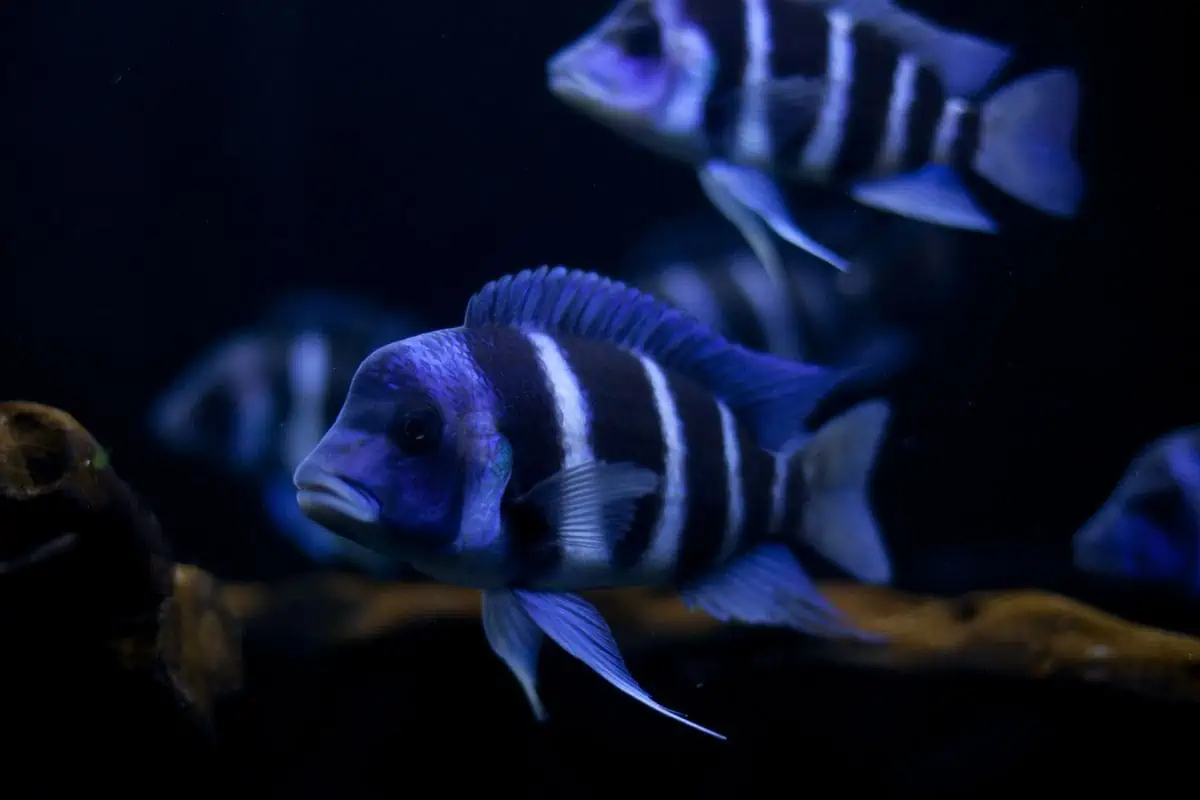Cichlids, with their dazzling array of colors and intriguing behaviors, have captivated the hearts of aquarium enthusiasts and pond keepers worldwide.
Jump links:

These dynamic fish, hailing from diverse habitats ranging from the vast African Rift Lakes to the meandering rivers of Central and South America, offer a unique glimpse into the complexities of aquatic life.
Creating communities of these vibrant creatures in the controlled environments of aquariums and outdoor ponds presents both a challenge and an opportunity.
It allows enthusiasts to explore the fascinating interactions and social structures of these fishes, while also requiring a keen understanding of their specific needs and natural behaviors.
Balancing the ecosystem to accommodate the diverse requirements of different cichlid species, such as the striking Jaguar Cichlid, is key to fostering a harmonious and thriving aquatic community.
Understanding Cichlid Diversity
Cichlids hail from various regions, primarily from Africa, Central, and South America, each with unique characteristics and requirements. Their diversity in size, temperament, and environmental needs makes understanding individual species crucial for a harmonious community.
African vs. American Cichlids
African cichlids, known for their vibrant colors and aggressive temperament, differ significantly from their American counterparts, which are often larger and more territorial. This distinction is essential when selecting species for a community setup.
Special Considerations for Jaguar Cichlids
The Jaguar Cichlid, a Central American species, is known for its striking pattern and large size. It’s crucial to consider their aggressive nature and need for ample space when adding them to a community tank or pond.
Creating a Compatible Community
Building a compatible cichlid community requires careful consideration of each species’ temperament, size, and environmental needs. The goal is to minimize aggression and stress while promoting natural behaviors.
Size and Temperament Matching
Pairing species of similar size and temperament can reduce conflicts. Smaller, more peaceful cichlids should not be housed with large, aggressive species like the Jaguar Cichlid.
Mixed Region Considerations
While mixing African and American cichlids is generally not recommended due to differing water parameters and behaviors, certain species may coexist peacefully if their environmental and dietary needs are similar.
Aquarium and Pond Setup
Creating an environment that caters to the diverse needs of cichlid species is key to a thriving community. This involves careful planning of the space, water conditions, and decor.
Aquarium Size and Layout
A spacious aquarium is essential, especially for larger species like the Jaguar Cichlid. The layout should include hiding spots, territorial boundaries, and open swimming areas to mimic natural habitats.
Outdoor Pond Considerations
Outdoor ponds offer a unique opportunity for larger or more territorial cichlids to thrive. However, they require careful water quality and temperature monitoring, especially in varying climates.
Diet and Nutrition
Cichlids have varied dietary needs based on their species. A balanced diet is crucial for their health, coloration, and overall well-being.
Species-Specific Diets
While some cichlids are omnivores, others may lean towards herbivorous or carnivorous diets. Understanding and catering to these needs is crucial, especially in a community setting.
Feeding Strategies
Implementing feeding strategies that ensure all fish get adequate nutrition without overfeeding is important. This might include targeted feeding or multiple feeding areas for different species.
Health and Maintenance
Regular maintenance and monitoring are essential in preventing diseases and maintaining a healthy environment for cichlids.
Water Quality and Filtration
Keeping the water clean and at the correct parameters is crucial, especially in a community tank with diverse species. Regular water changes and efficient filtration are key.
Disease Prevention and Management
A close eye on fish behavior and physical signs can help detect early disease. Quarantine procedures for new additions and regular health checks are important preventative measures.
Breeding in Community Settings
Breeding cichlids in a community tank or pond can be challenging but rewarding. It requires understanding the breeding behaviors and needs of each species.
Managing Aggression During Breeding
Many cichlids become more territorial and aggressive during breeding. Providing adequate space and hiding spots can help manage these behaviors.
Breeding Strategies
For species that are difficult to breed in community settings, separate breeding tanks may be necessary to ensure both parents’ and fry’s safety and health.
Challenges and Considerations
Maintaining a cichlid community comes with challenges, from managing aggression to ensuring the health of all species.
Aggression Management
Cichlids can be territorial and aggressive. Strategies like rearranging tank decor or using dither fish can help minimize these behaviors.
Long-Term Commitment
Cichlids can have long lifespans, and their care requires a long-term commitment, especially when maintaining a diverse community.
Key Takeaways
- Cichlid diversity requires careful consideration of size, temperament, and environmental needs for community setups.
- Jaguar Cichlids and similar large, aggressive species need ample space and compatible tank mates.
- Balanced diet and water quality are crucial for health and coloration.
- Managing aggression and breeding in community tanks requires strategic planning and observation.
- Long-term commitment and regular maintenance are essential for a thriving cichlid community.
Final Thoughts
Creating a cichlid community in an aquarium or outdoor pond is a fulfilling endeavor that requires dedication, knowledge, and attention to detail.
Understanding the specific needs and behaviors of different cichlid species, especially larger or more aggressive ones like the Jaguar Cichlid, is crucial in building a harmonious community.
With proper care, a balanced diet, and effective management of space and aggression, cichlid enthusiasts can enjoy these fascinating fish’s dynamic and colorful world.
